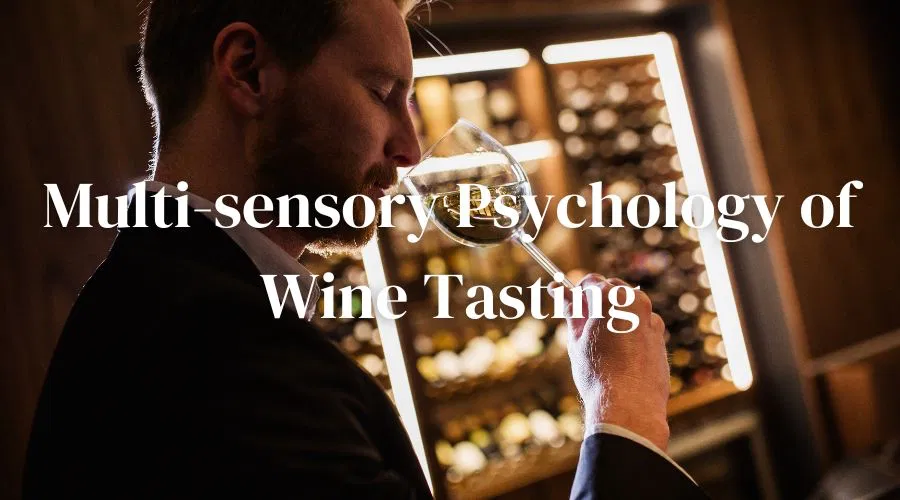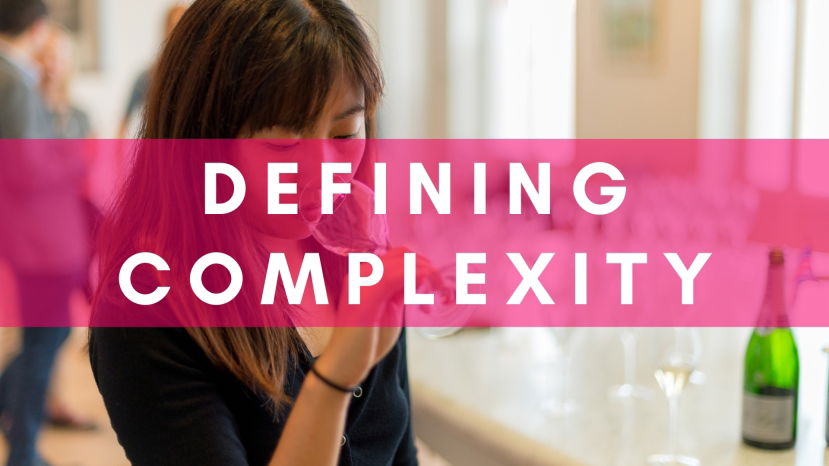
Multisensory psychology of wine tasting
Summary
About the Speaker
Experimental psychologist and computer scientist by training, Janice is an Associate Professor at the Department of Food Science at the University of Copenhagen. Her research examines the role of the brain flavor system and its connection with eating behavior, in order to gain a deeper understanding of why people eat what they do, and to encourage behavior change for a healthier, more sustainable lifestyle. A lifelong lover of wine, Janice is a stage 3 Master of Wine student, certified WSET educator and IWC judge. Her proudest wine moment is leading Oxford to victory against Cambridge in the varsity blind tasting competition (twice).
Timestamps
Introduction to the Webinar (00:00)
The host welcomes participants and introduces Janice Wang, highlighting her expertise in sensory science and wine.
Janice's Overview (00:01)
Janice begins her presentation on multi-sensory flavor perception related to wine tasting.
Classic Introduction to Flavor Perception (00:02)
Janice discusses basic flavor perception, ensuring a shared understanding before diving deeper.
Predictive Processing in Flavor Perception (00:02)
Introduction to the predictive coding model and its implications for flavor perception.
Influence of Senses on Wine Tasting (00:03)
Janice emphasizes the role of various senses, including vision, hearing and touch, in wine tasting.
Provocative Question on Wine Expertise (00:05)
Janice questions the value of wine expertise amidst public skepticism about tasting abilities.
Basic Senses in Flavor (00:06)
Overview of taste, smell (ortho and retro nasal) and mouthfeel as foundational senses in flavor.
Classic Tasting Notes Example (00:09)
Janice presents a classic wine tasting note, illustrating the integration of different sensory attributes.
Eating Involves All Senses (00:10)
Discussion on how all senses contribute to the eating experience, including visual stimuli.
Predictive Processing Model Explained (00:11)
Janice explains how the brain predicts sensory experiences before actual tasting occurs.
Poll on Sweetness Perception (00:14)
Participants vote on which drink they perceive as the sweetest, illustrating predictive processing.
Color Association with Sweetness (00:15)
Janice discusses how color influences sweetness perception based on evolutionary biology.
Research on Anticipatory Metabolism (00:16)
Findings on how expectations of sweetness affect physiological responses, despite identical sugar levels.
Importance of Color in Wine (00:17)
Janice highlights how color can convey information about wine characteristics and quality.
Debunking Misconceptions About Wine Tasting (00:19)
Janice critiques a study claiming experts can't distinguish red from white wines.
Methodology of Color Study (00:20)
Details on the flawed design of a study that led to misconceptions about wine tasting abilities.
Janice's Own Study on Wine Perception (00:21)
Janice shares her research comparing descriptors for colored and uncolored wines among tasters.
Predictive Processing in Wine Tasting (00:23)
Discussion on how experts may predict flavors based on visual cues, affecting their tasting experience.
Virtual Reality and Coffee Perception (00:24)
Janice discusses how VR alters perception of coffee flavor based on visual cues like color.
Color Manipulation in Taste (00:25)
Explains how coffee color affects perceived creaminess, especially when sweetness is low.
Emotional Influence on Taste (00:27)
Studies the impact of background color and sound on coffee taste perception.
Bottle Shape Study (00:28)
Reveals how wine bottle shape influences perception of flavor intensity and liking.
Multi-Sensory Metaphors for Wine (00:29)
Engages the audience in matching wine varieties with shapes, exploring intuitive associations.
Background Music and Consumer Behavior (00:32)
Discusses how music genre affects consumer spending and atmosphere in wine bars.
Music and Wine Pairing Exercise (00:33)
Conducts an exercise matching music with red and white wines to explore sensory connections.
Chocolate and Music Demonstration (00:36)
Involves the audience in tasting chocolate with different soundtracks to illustrate sensory interactions.
Cross-Modal Correspondences (00:38)
Explains how sounds can evoke associations with taste, using the bouba-kiki example.
Sonic Seasoning Concept (00:41)
Describes how soundtracks can influence taste perception during eating experiences.
Neuroimaging Study on Taste and Sound (00:43)
Discusses findings from a study showing brain activity changes when tasting with sound.
Touch and Mouthfeel in Wine (00:45)
Explores how touch sensations, like holding different materials, affect wine tasting experiences.
Weight Perception in Dining (00:49)
Investigates how the weight of cutlery influences perceptions of food quality and value.
The Influence of Utensil Weight on Wine Perception (00:51)
Discussion on how the weight of wine glasses may affect perceptions of wine quality.
The Role of Context in Taste Perception (00:52)
Emphasis on the brain's predictive processing and the importance of context in tasting experiences.
Finding Janice's Research (00:53)
Janice shares where to access her extensive research publications.
Philosophical Question on True Taste (00:54)
Exploration of whether true taste can exist outside environmental influences.
Impact of Glass Holding Technique (00:57)
Discussion on the variability of how wine glasses are held during tasting.
Unexpected Results in Wine Studies (00:58)
Janice reflects on experiments where expected effects on taste were not observed.
Closing Remarks and Future Collaboration (01:00)
Janice expresses interest in bridging academic research with the wine industry.


